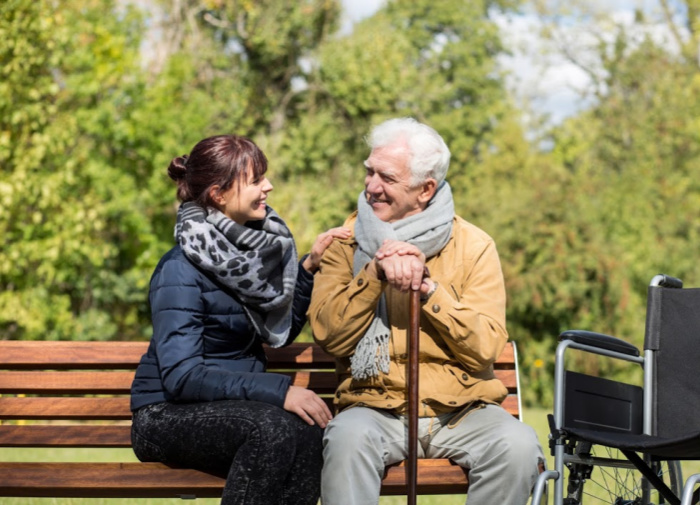5 Things You Need To Know About Care Giving
 Did you know there are over 42 million unpaid caregivers in the U.S.? Yes, that’s 42 million – unpaid. Whether you’re caring for a loved one at home or from a far, it has its’ challenges. And the current pandemic has made those challenges even more difficult to manage.
Did you know there are over 42 million unpaid caregivers in the U.S.? Yes, that’s 42 million – unpaid. Whether you’re caring for a loved one at home or from a far, it has its’ challenges. And the current pandemic has made those challenges even more difficult to manage.
So what do you do if you find yourself taking on the task of assisting or caring for a loved one?
1) Evaluate What You Can Do
- Understand that you may not be able to provide 100% of the care. Evaluate what you are good at. Are you good with money? Perhaps you can best pay bills and help with financial affairs.
- Get a team together. Is a sibling better at organizing care, or providing meals. Can a neighbor help with yard and home maintenance? Is someone local that can provide transportation to doctor visits etc.?
Remember, providing 100% of the care can be difficult. Especially if you find your loved one needs more care as time goes on.
2) Evaluate Your Loved Ones’ Living Situation
- Many families have their loved one stay with them or move in. Other families move closer to their loved ones to provide care.
- If these scenarios aren’t possible, consider hiring in-home help. Or consider a move to a senior living community or assisted living facility.
- If your loved one can remain independent, there are tools to help. Monitoring tools, emergency pendants and security systems are a great help for your and your loved ones peace of mind.
- Plan periodic visits and check-ins.
3) Stay In The Loop With Technology
- If your loved one is technology savvy, use video chatting or video conferencing such as zoom or skype. Otherwise, ask visitors to Face Time or ask the facility to set up these types of calls.
- Use three way calling or create a private Facebook group to connect and share information.
- Attend doctor visits virtually or use your speaker phone to be a part of physician visits.
- Utilize (with permissions) patient portals for health information. With permissions, you can access doctor visits notes, and other important information.
4) Consider The Finances For You And Your Loved One
- Is there insurance money or resources to hire help or to cover the cost of a facility?
- Are you able to take time off from work to care for your loved one?
- Remember, FMLA will allow you to take the time off, but, that may not be long enough, and it’s time off without pay.
- If you are long distance, how often are you able to visit and take on travel costs?
Consider what’s feasible and create your plan around that.
5) Covid-19 Solutions
The current pandemic is making personal visits more risky to our elderly loved ones. It’s making visits impossible if they are in any kind of facility. So what can you do? Some of the technologies and tools mentioned above can provide a great sense of relief and help you stay in-touch. But there are other things you can do as well;
- Send your loved one packages, letters, cards and trinkets. Sending a note or some of their favorite “goodies” can really brighten their day. (And give them something to do).
- Do a drive-by with family and friends. Seeing your loved one will help brighten their day and yours.
- If you can, do a personal visit enforcing social distancing to keep your loved one safe.
There are also many Apps and Resources available. Most are free to use. Some provide premium features available at an additional cost. Some of the apps focus on information sharing. Some focus more on organization and care giving or medication management. Check them out and see which best suits your situation. Some of the more popular ones are; Caring Bridge, Caring Village, ecare21, Medisafe.
And remember, My Life and Wishes is the best guide. Your loved one (or you as a caregiver) can complete and house all your loved ones critical information, documents and directives. If you haven’t tried it, get started today at www.mylifeandwishes.com.
For more information on how to best coordinate long distance care giving, click here for a great article from AARP>>
Click here for tips about creating a healthy remote caregiver situation>>